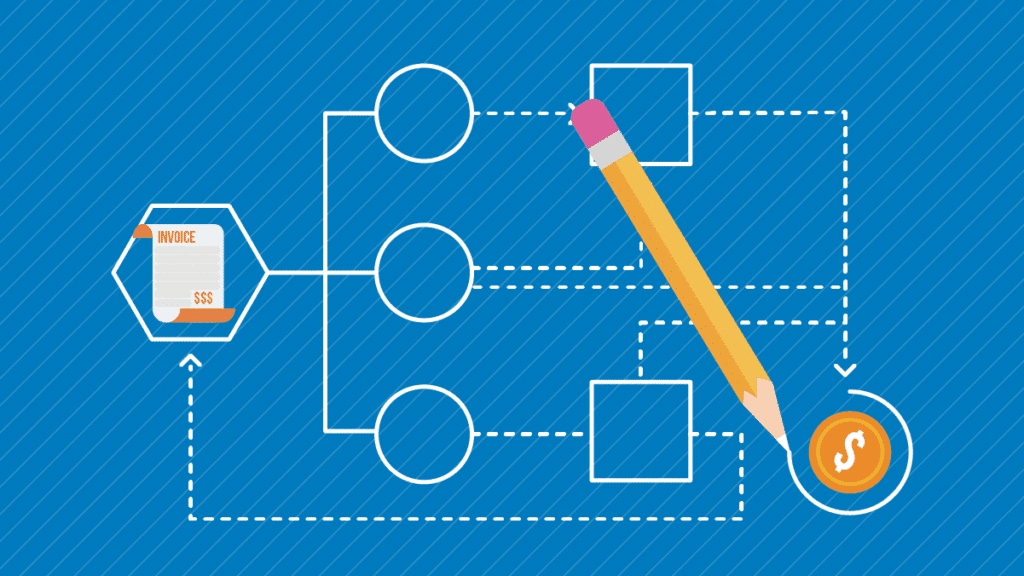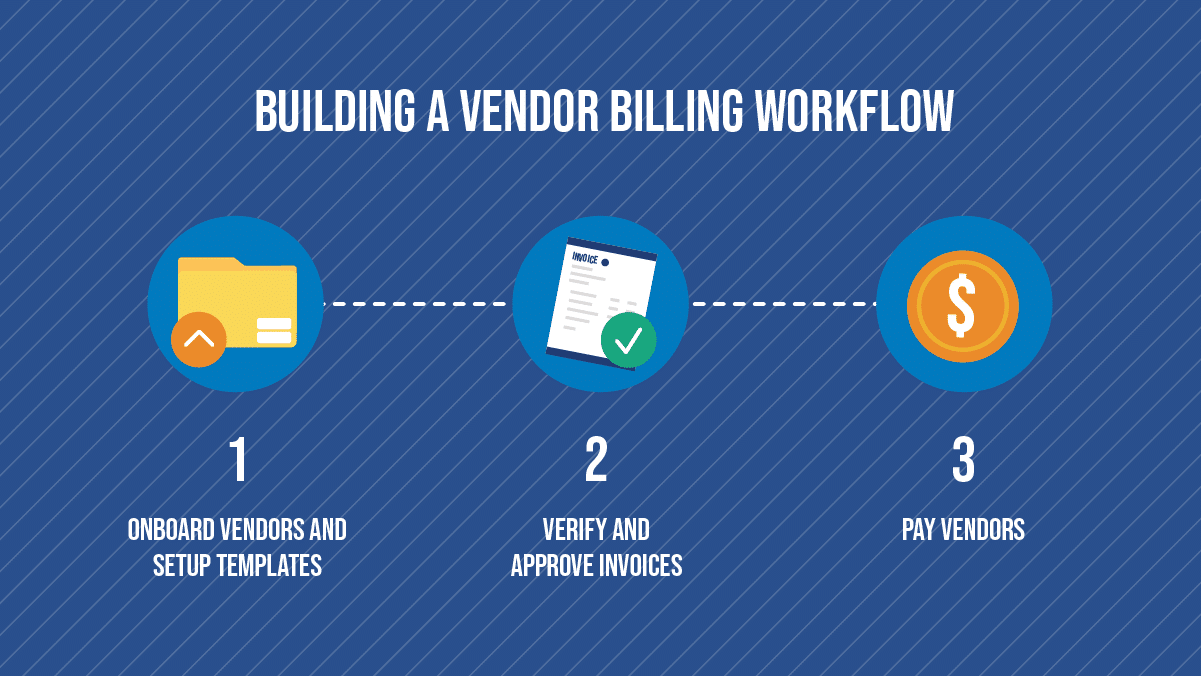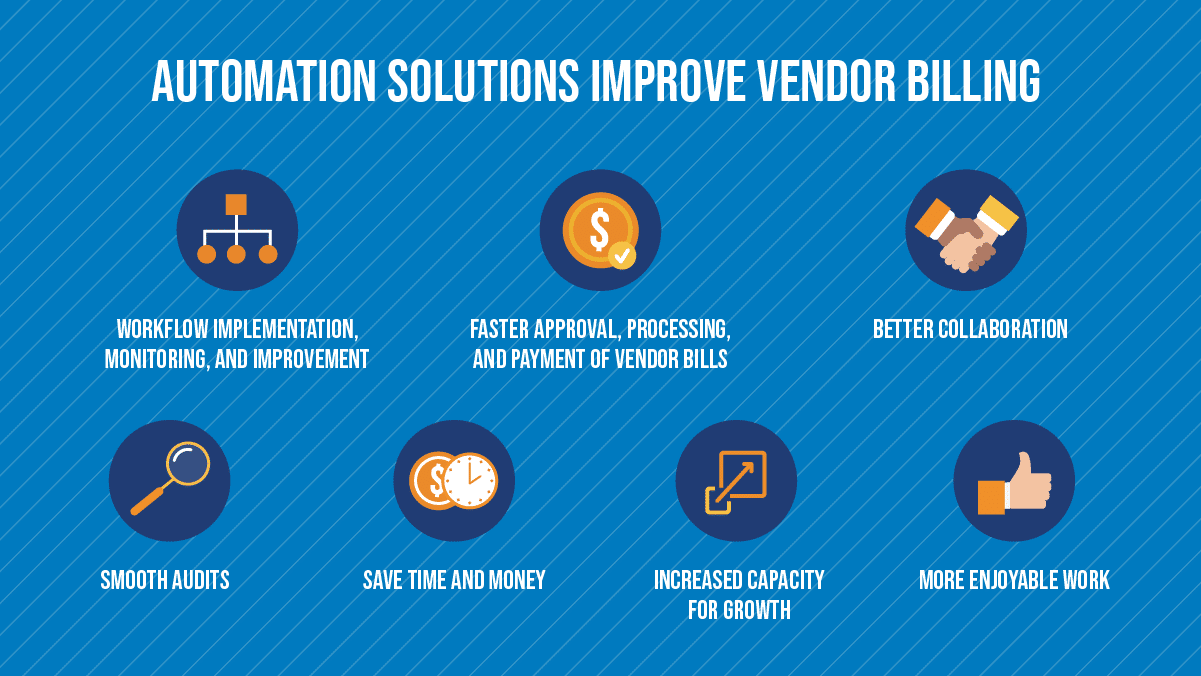Vendor Billing: How to Build a Better Workflow

A streamlined vendor billing workflow is essential for maintaining the financial health and integrity of your business. By establishing the processes your team needs to follow in order to make paying your vendors a smooth experience, you’ve given your business the gift of a strong foundation that supports overall efficiency. With a proven workflow in place, the risk of making errors decreases while productivity and the speed of decision-making increases.
Anyone who has ever created a workflow knows how important it is to evaluate your system and processes periodically. At a minimum, this should be done annually, but every 6 months is the ideal rate at which workflows should be reevaluated. If it’s time to give your vendor billing workflow a checkup, or if you need to establish your first standardized vendor billing workflow, keep reading to learn exactly how to do it.
What is Vendor Billing?
Vendor billing is an accounts payable process that manages the payments rendered to vendors who provide services or supplies to your company. The vendor bill is the invoice that is issued following the fulfillment of your purchase.
Overview of the Vendor Billing Sequence
Here are the three steps to follow for a smooth vendor billing process:
- The vendor sends an invoice to the accounts payable department for goods or services delivered.
- The accounts payable department verifies the invoice against the corresponding purchase order(s).
- After the invoice has been validated and approved, it can be processed for payment.
On the surface, this seems like a simple, straightforward process. But this is typically not the case for most businesses where operations move at a lightning fast pace. A whopping one in twelve businesses admit to never monitoring their payment processes. This is a shocking reality when you consider just how important it is to have a handle on vendor payments for the sake of cash flow and internal performance.
Some of the issues that a poorly handled vendor billing cycle creates within a company are:
- Late payments – Without a system for managing vendor bills, there’s no way to ensure that vendors are paid on time.
- Higher prices – Late payments lead to penalties, which can have a negative impact on budgets and future projects.
- Eroded relationships – Vendors who don’t receive payments on time may not wish to continue providing their services or supplies to your company in the future.
- Supply chain issues – A lack of timely payments can lead to performance issues for your vendors, which creates supply chain disruptions that can impact your business.
- Stress – Disruptions to your operations can increase feelings of stress and frustration for your entire team.
It’s clear to see that a healthy vendor billing process is critical to maintaining high standards within your organization. But how do you create and implement a workflow that improves the vendor billing process, increases job satisfaction for your team, and improves overall efficiency? Let’s zoom out and take a look at how to build a workflow that streamlines every stage of the vendor billing process.
Building a Vendor Billing Workflow

The vendor billing workflow begins after vendors have been evaluated and selected according to your company’s criteria. Here are the stages involved with setting up a vendor in your system for the first time.
Stage 1: Before the Initial Bill Arrives
Here are the steps to take to setup a new vendor before the first bill arrives:
- Decide how to allocate the expense – Will each department or division share the expense equally or will the charge impact a smaller segment of your organization?
- Determine which month to begin entering the expense in accounts payable.
- Assign an account number to your vendor in your General Ledger account.
- If you’re using software (which we strongly recommend), create a template for easier and faster processing in the future. In addition to the vendor information, include how the expense will be allocated, which bank account the payment will come from, and any other relevant information.
- Setup the payment schedule – Remove the guesswork and potential for mistakes by establishing a regular payment schedule for your Vendor. This way, everyone will know what to expect and you can avoid any negative surprises.
By taking the time to complete these initial steps, your team will be ready to receive and process your vendor bills much faster. Let’s explore how that could look for your accounts payable department.
Stage 2: When You Receive the Bill
Vendor bills are issued after they have successfully fulfilled your order. If you received a service, your vendor will send an invoice to you following completion. If you’ve received goods, your invoice will accompany the delivery of the product.
- It’s important to ensure that the bill matches an existing purchase order so that you’re only paying for the goods or services that you’ve actually received.
- Record the invoice in the General Ledger (GL) along with any relevant attachments. Include the invoice number, the date, purchase order (PO) number, the due date, and the full invoice amount.
- Flag the invoice for verification and approval before you proceed to the next stage.
The most important thing to remember when you’ve received a vendor bill is to record it quickly and accurately. Daily account reconciliation is the best practice to follow to maintain good financial records.
Stage 3: Paying Your Vendors
Once the invoice has been approved, it’s time to release payment to the vendor.
- Enter the pay date – this is the date that your company will send payment to the vendor, which is different from the due date of the invoice. Choose date that falls before the vendor’s due date to ensure timely payment.
- Enter the payment amount – Record the full or partial payment.
- If you didn’t create a template earlier in the process that contained the allocation and bank account information, record this information now.
- Now you’re ready to post the payment to the General Ledger and issue funds to your Vendor.
This final stage may look a little different in your business, but this is a solid framework to use for building a straightforward workflow that works well for your needs.
How to Eliminate Vendor Billing Chaos

Managing vendor billing isn’t complex, but it can become incredibly challenging unless you’ve created a simple, easy-to-follow workflow for recording, processing, and paying invoices. This is true whether you’re a small to midsize business or a corporation with offices that span the globe.
It takes multiple people to stay on top of business financials, even within smaller companies. The last thing you want is for your team to reinvent the wheel. A standardized process for vendor billing provides your team with guardrails that help you to avoid costly errors and fraud. If your business relies on manual accounting, you can create a system to catch potential errors by assigning one person to receive and record invoices and another person who is responsible for approval and business-to-business (B2B) payments.
The downside is manual accounting processes can hold your company back from scaling because of the time it takes to get the work done. This is why automation is such a powerful tool for streamlining and boosting your vendor billing workflow.
How Automation Solutions Improve Vendor Billing
If you’re new to the idea of automation for accounting processes, you may wonder why it’s worthwhile to switch from manual invoicing. Here are some of the benefits that automated solutions can provide to your business:
- Easy workflow implementation, monitoring, and improvement – After you’ve set up the workflow parameters using your automation tool of choice, the system helps your team to follow the proven processes every time. Need to make a change? No problem. Examine the data and look for areas of improvement.
- Faster approval, processing, and payment of vendor bills – With open and transparent access to the accounting system, everyone who is responsible for managing the financials has what they need to make decisions faster.
- Better collaboration – Teams can work together using the same set of data in real time, which eliminates back and forth delays.
- Smooth audits – Examining your financial statements is a breeze when you use your automation software to generate reports with the exact data you need.
- Save time and money – Handle vendor bills faster to avoid late fees and create happier team members and vendors.
- Increased capacity for growth – Tackle larger projects with confidence. Automation makes it easier to keep track of vendor bills without compromising your momentum.
- More enjoyable work – By eliminating the bottlenecks that can form with manual accounting processes, you eliminate a significant amount of the financial related stress your team experiences. A low stress work environment is a win for everyone.
The right automation tool can transform your accounts payable department into the hero of your company. There are several online platforms that can help you achieve the visibility and simplicity you need to improve your vendor billing workflow. If you’re looking for an all-in-one business spend management platform, give your team a competitive edge with Stampli.
Automate Vendor Billing with Stampli
Stampli is accounts payable (AP) automation software that allows you to take control of your business’s procure-to-pay processes. It’s an easy-to-use, intuitive interface that makes collaboration across your organization and with your vendors a cinch.
Improve your workflows and vendor relationships with Stampli’s AP dashboard, the place where you can manage accounts payable processes like invoice processing, payments, discounts, and more.
With Stampli, you can track and understand all the important metrics that matter to your business using real time data to inform your decisions.
Stampli’s Vendor Portal gives your vendors the ability to check the status of their invoices 24/7, which reduces the time spent answering emails or taking disruptive phone calls.
Working with a remote or hybrid team? Not a problem. Stampli can be accessed from anywhere, at any time. Your team can work together from anywhere in the world.
Ready to experience how effortless vendor billing management can be? Talk to one of our AP Automation Experts to get a free demo of Stampli.
